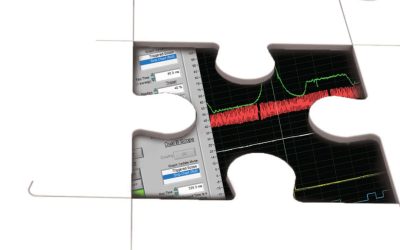By Ron Ananian
It’s been said that one of the greatest hurdles facing the automotive repair aftermarket is the lack of qualified, highly-trained technicians available to service today’s advanced-technology vehicles. Automotive repair shop owners invest a huge amount of money each year to find and train the right people, many times with little or no return on their investment. In other words, the new guy lasts a week and decides this isn’t for him.
Aside from the person-power shortage, tooling is also an issue. You never seem to have enough scan tools at your disposal, or the one you need is always being used on something else, and . . . well, you get the idea.
Last week a new customer came in to have a service engine light (MIL) diagnosed and repaired on her 2001 Toyota Camry. The repair was straightforward. The illuminated MIL was the result of a problem in the fuel evaporative system. The bigger problem, however, came afterwards. The vehicle was due for New Jersey State Inspection, and since during the repair the diagnostic trouble codes (DTCs) had been cleared, the OBD II monitors needed to run a complete drive cycle in order for the vehicle to pass. Not to mention that in order to prevent intentional DTC erasure, the OBD II system conducts a “Readiness Test†before displaying DTCs. If the Readiness Test indicates that the OBD II monitors have not run since the codes were cleared, the vehicle is rejected from state inspection testing and the customer has to return for a retest.
Analyzing the workload situation in the shop at that moment told me that today was not the day to spend on a road test, trying to run a drive cycle in order to complete the monitors. Not unless I had an extra highly-trained technician available to help out around the shop, which, as you may have guessed, was not the case.
The postman may ring twice, but the UPS guy only once to give me all I needed to solve my technical dilemma. That afternoon, I received a parcel at the shop that contained a brand new 3358 OTC Monitor Readiness status tool. A quick look through the instructions told me that this baby was ready to go out of the box. Small enough to carry like a pager, but big in power, the tool plugs into the OBD II test port (DCL) and immediately sends a signal to the driver on monitor status by a combination of LEDs and a chime. It can even detect if enough monitors have run for inspection or if ALL of them are complete.
The customer needed her car. “Fine, no problem,†I said. “Leave me a deposit for the tool and drive the vehicle. When it lights up and/or the chime sounds, the vehicle will be ready for inspection. If it doesn’t happen in a week, come back anyway.†Together we finished the paperwork and I sent her on her way. Two days later, the Toyota was back and the 3358 OTC Monitor was lit up, which let me know that the car was in “readiness to go†for inspection. And the customer was lit up too. She was all smiles and impressed by how we handled her problem and dealt with the technology.
What about you? Are you and your shop in “readiness†mode? Are you dealing with technology, or sitting out for a hand or two? Want to hire a part-time employee who’s always ready to go? And cheap?
As I always say, “Good mechanics aren’t expensive, they’re priceless!â€
Identity Verification for Mercedes-Benz XENTRY Diagnosis, Programming and Theft Relevant Parts
There have been big changes in the processes; here’s what you need to know! ...we will discuss the TRP policy and procedures, followed by what is likely somewhat new to you, the account verification system. As the title suggests, there are two separate processes for...




0 Comments